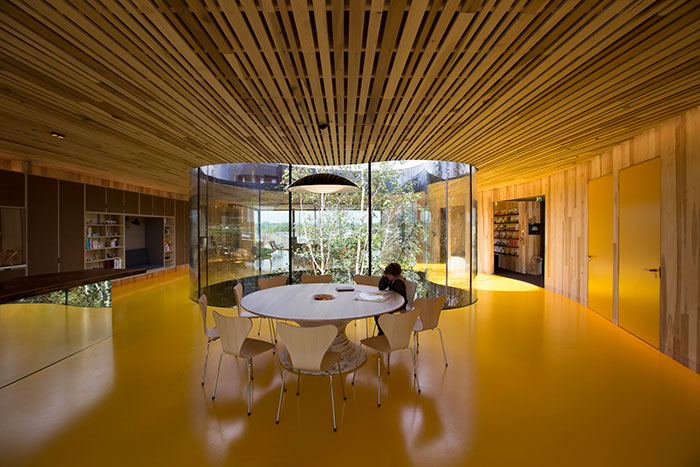Increased demand for American hardwoods in UAE, Pakistan, Lebanon and Jordan
 Other News
Other News Subscribe to newsletter
Subscribe to newsletter
| 19 Sep 2017 |
Total exports of U.S. hardwood lumber and veneer to the Middle East and North Africa (MENA) region reached USD 51.65 million for the first half of 2017, according to the American Hardwood Export Council (AHEC), the leading international trade association for the American hardwood industry. The statistics, which have been compiled from the latest data released by the United States Department of Agriculture (USDA), reveal that the total volume of hardwood lumber shipped from the United States to the region increased by 28 percent to 51,394 cubic meters and by 29 percent in value to USD 41.25 million during the January to June period of this year. At the same time, direct exports of American hardwood veneers to the MENA region fell by 23 percent in value to USD 10.40 million.

Among the major destinations for U.S. hardwood lumber in the region, significant rises in shipments were seen to the United Arab Emirates and Pakistan. However, large increases were also seen in exports to Jordan and Lebanon. Of these, by far the most substantial increase was seen in shipments to the UAE, which rose by 179 percent during the period to a volume of 14,488 cubic meters and by 180 percent to USD 12.13 million. This dramatic increase is partially due to restocking after very low levels of purchasing during the second half of 2016, but it is also due to new construction project cycles, many of which are now entering the interior fit-out stage.
To Pakistan, shipments of American hardwood lumber rose by 19 percent in volume and by 17 percent in value during the January to June period of this year, reaching 9,153 cubic meters and USD 7.09 million respectively. The volume shipped was almost completely accounted for by ash. Among the other major MENA markets for U.S. hardwoods, exports to both Egypt and Turkey were down during the January to June period of this year. Exports to Egypt, which saw significant growth during the past two years, fell by 27 percent in volume and by 26 percent in value during the first half of this year, to 4,166 cubic meters and USD 3.23 million respectively. The majority of this decrease was accounted for by lower shipments of red oak, while exports of white oak to the market actually picked up marginally.
Turkey’s imports of U.S. hardwood lumber fell by 12 percent in volume to 4,880 cubic meters and by 6 percent in value to USD 4.17 million. However, this was entirely due to a reduction in imports of species other than ash, which are destined for general use in the market and not for thermal-modification. Turkey’s economy has slowed considerably during the past couple of years and construction activity is far lower than before. However, for the producers of TMT (thermally-modified timber) in Turkey, the local market is less important and imports of American ash for this process actually nearly doubled during the first half of this year.
“While 2016 was a slow year for exports of American hardwood lumber and veneer to the MENA region (this includes Pakistan), 2017 has, so far, proven to be very positive. In fact, the total volume of hardwood lumber shipped from the United States to the region in the first half of this year is already equal to more than two thirds of the total shipped during the whole of 2016. In terms of species, red oak, walnut, ash and white oak continue to dominate the share of exports to the region. However, it is encouraging to see higher volumes of tulipwood, maple and cherry being exported across different markets,” concluded Roderick Wiles, AHEC Director for Africa, Middle East, South Asia and Oceania.




